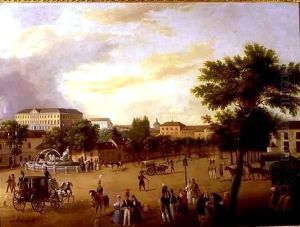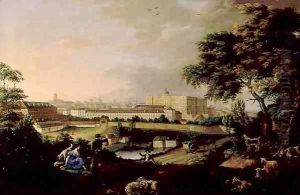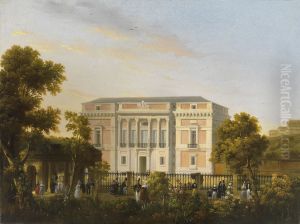Jose Maria Avrial Y Flores Paintings
Jose Maria Avrial y Flores was a prominent Spanish painter and scenographer born in 1817 in Madrid, Spain, and died in 1891. His life and work were deeply embedded in the 19th century's artistic movements, particularly within the Romanticism that swept through Europe, influencing various forms of art, including painting, literature, and theater. Avrial y Flores is notably recognized for his contributions to scenography and decorative arts, which played a significant role in the development of theatrical and visual culture in Spain during his time.
From a young age, Avrial y Flores showed a keen interest in the arts, which led him to pursue his studies at the Real Academia de Bellas Artes de San Fernando, where he was influenced by the vibrant artistic scene of Madrid. His early career was marked by his work as a scenic painter for theaters, where he developed a distinctive style characterized by its dramatic expression and attention to detail, qualities that were highly prized in the Romantic era's theatrical productions.
Throughout his career, Avrial y Flores engaged with various artistic mediums, including painting, drawing, and lithography. However, his most enduring legacy is his contribution to scenography, where his innovative designs and use of space revolutionized the visual experience of theater in Spain. He worked on numerous productions, creating elaborate sets that captivated audiences and enhanced the dramatic effect of the performances.
Beyond the theater, Avrial y Flores also made significant contributions to the visual arts through his paintings and illustrations. His works often depicted historical and mythological scenes, executed with a romantic flair that emphasized emotion and drama. His artistic style reflected the broader movements of Romanticism and Realism, capturing the spirit of his times while also showcasing his unique artistic vision.
Jose Maria Avrial y Flores's contributions to the arts were recognized during his lifetime, and his legacy has continued to be celebrated for its impact on 19th-century Spanish culture. His work remains an important part of Spain's artistic heritage, offering insight into the historical and cultural context of the period as well as the evolution of scenic design and visual storytelling.


